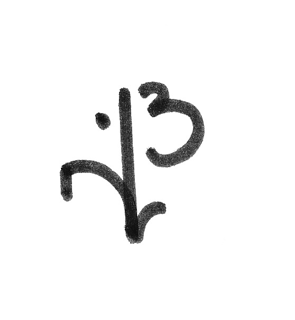Introduction to LIMBAWA
 Welcome to the language of béu
Welcome to the language of béu
The very first language that I tried to construct was called HARWENG. This was eventually given up about 10 years ago. The basic problem was that I didn't know enough about linguistics. As they say "if you want to get high, build a strong foundation". When I tried to build on the HARWENG foundations, I found just too many things that didn't harmonise with each other. It seemed like an impossible task to cut thu' the tangles that I had created, so reluctantly I put that project aside.
The second language that I tried to construct was called SEUNA. I think the reason that I put this one to one side was that I was never too happy about the script. However my third language LIMBAWA carried on many ideas that were thought out originally in SEUNA. With LIMBAWA it looks like I can finish it. I think I have passed the point where unforeseen difficulties can spring up and strangle the project. I would say the foundations are 95% finished. However there is still a lot of work ahead ... vocabulary building and considering the semantics of individual lexical words. I plan for LIMBAWA to be a complete language ... not just a grammatical sketch.
In its final form LIMBAWA is seems to be quite a natural language. By that I mean that most of the grammar and the "patterns" in the language would not be considered out of place in any natural language. However in its long history (HARWENG => SEUNA => LIMBAWA) it has changed many many times. It has gone thru' many iterations. I would change one part of the grammar and then find that this change didn't fit with something else. So I would change it back, or modify the "something else", or else try a completely new idea. This happened many many times. I suppose the changes that happened in in the development of LIMBAWA are similar to the diachronic changes that happen to natural languages, and hence LIMBAWA ended up looking quite naturalistic.
The shaping of LIMBAWA can be compared to the shaping of a protein. This is a long linear chain molecule that folds up on itself to takes on a very definite and complicated shape. The final shape is determined by a series of movements that are initiated by the attractive and repulsive forces that the various links in the chain have for each other. In a similar way the final shape of LIMBAWA was determined by the way that different grammatical patterns and phonological patterns either clashed with each other, or matched with each other through a number of successive iteration.
It was an appreciation of the elegance of patterns within natural languages and a fascination with the ways that languages can change shape through time that led to me constucting LIMBAWA. And I suppose that the forces that shaped LIMBAWA also shape natural languages.
Footnote ... I would also cite the completion of "Basic Linguistic Theory" by R.M.W. Dixon recently, as a major factor contributing to my optimism about the eventual completion of LIMBAWA. As well as giving a broad topological perspective of the World's languages, this trilogy puts in its place the dangerously convoluted terminology that has grown up in the field of linguistics over the last thirty years : the appropriate place for this confusing terminology is, of course, the rubbish bin.
Index
- Introduction to LIMBAWA
- LIMBAWA : Chapter 1
- LIMBAWA : Chapter 2
- LIMBAWA : Chapter 3
- LIMBAWA : Chapter 4
- LIMBAWA : Chapter 5
- LIMBAWA : Chapter X